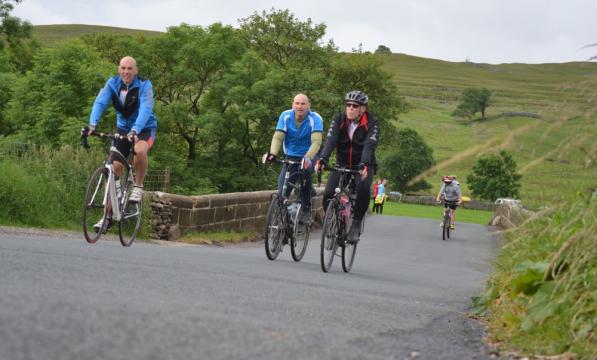Cycle use down in England in 2013

However, since the average trip has again increased - to 3.3 miles - the average distance per person in England remains similar to previous years.
The figures back up evidence from the Active People Survey earlier in the year which showed a slight decline in cycling in England in 2013.
There were just over 14 trips per person in 2013, down from 20 per person in the late 1990s. On average people travel just 49 miles per person, though that is slightly higher than it was in the past.
The National Travel Survey is a large, annual survey of - in 2013 - over 16,000 people. The respondents answer a questionnaire and a fill out a week long diary of their travel habits, which generates the dataset from which the estimate of annual transport use is derived. Until 2012 this data was collected for the whole of Great Britain; now it is just England.
The reasons for the decline are partly structural: the bicycle is mainly used for commuting, yet the proportion of trips for commuting has fallen over the last 20 years, whereas day trips and social visits to friends has gradually increased, and these trips tend to be longer, made in groups, by car.
As the population ages, the number of trips made falls for all modes, but particularly cycling, which accounts for only 0.7% of trips for those over 70, as opposed to 2.5% of trips for those in their 20s.
The gradual decline in trips made by bike, off-set partly by increasing trip lengths, shows that England's cycling policy is failing: we're managing to get middle-aged men back on their bikes, but we're not creating the conditions to allow their children, or grandchildren to be able to cycle safely.
Chris Peck
CTC Senior Policy Coordinator
However, in large part, the decline follows the long-term decline in cycle use in Britain due to the lack of adequate funding for cycling, and the poor conditions for cycling on our road network. Without funding - and good standards of cycle design - even local authorities committed to making space for cycling will struggle to afford to make the changes to street layout required to ensure everyone can ride.
What do these figures mean?
These figures matter because they are used to calibrate long term forecasts and analyse emerging trends and the effectiveness of policy. CTC has urged the Department for Transport to re-examine its National Transport Model, which suggests a fall in distance and trip length over the next 30 years.
What else does the Survey reveal?
As in last year's Survey, cycle use has risen amongst middle aged men, while continuing to fall amongst children.
- Men aged 40-49 now ride bikes almost as far on average per year (161 miles) as they walk (166 miles).
- Cycling to school remains very low, at just over 1% of trips.
- People from the top 20% of household incomes cycle over twice as far as those from the lowest 20% of incomes.
Cycling is highly seasonal
It's not a surprise that people prefer cycling in warm sunshine, than in the dark and cold. But cycling is unique in this regard: most other modes show virtually no seasonal change at all. The following graph shows the number of trips per person per month from the 2013 survey, indexed to January.

This seasonality must be considered when interpreting casualty data: a surge in casualties in the summer may only be a symptom of the fact that there are more people cycling, and while the risks may be lower when there are more cyclists about, there absolute number will still be higher.
The fall in cycle use may not be long-term, but it should serve as a warning to Government and local authorities that no matter how popular cycling might seem, without investment and the political will to make the changes necessary to the road network, the people who are inspired to cycle by the Olympics, by Tour de France success, or even cycle training, won't sustain that behaviour on road layouts not designed with them in mind.

